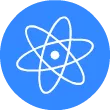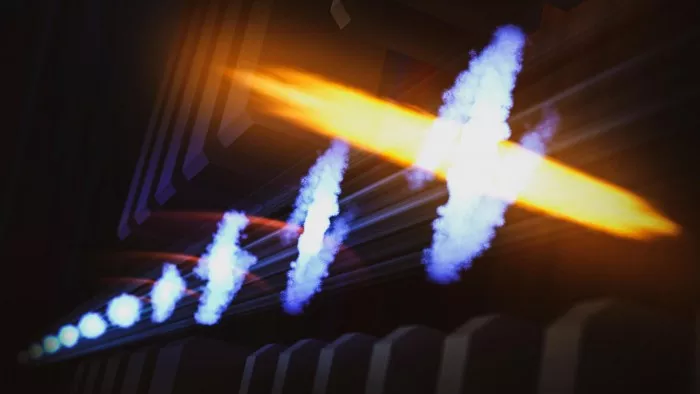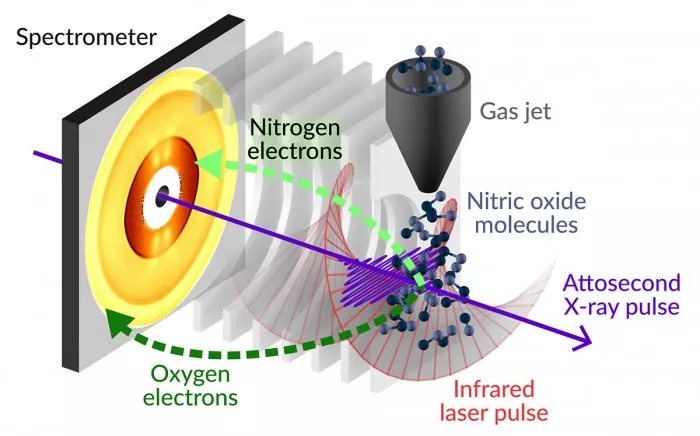Attosecond X-ray Pulses Less Than A Billionth Of A Second Long Allow Researchers To Go Deep Into Molecules, Track The Movement Of Electrons And Eventually Start Chemical Reactions In 2018, Scientists At The SLAC National Accelerator Laboratory Of The Department Of Energy Designed A Method To Produce An X-ray Laser Burst Lasting Hundreds Of Attoseconds (or Billionths Of A Second). This Technology, Known As X-ray Laser Enhanced Attosecond Pulse Generation (xleap), Enables Researchers To Study How Electrons Compete On Molecules And Start Key Processes In Biology, Chemistry, Materials Science And Other Fields.
"Electronic Motion Is An Important Process Through Which Nature Can Move Energy," Said SLAC Scientist James Cryan. "When A Charge Is Generated In One Part Of The Molecule And Transferred To Another Part Of The Molecule, It May Start A Chemical Reaction. When You Start Thinking About Photovoltaic Devices For Artificial Photosynthesis Or Charge Transfer Inside The Molecule, This Is A Difficult Problem To Get Around."
Now, Researchers At SLAC's Lincoln Coherent Light Source (LCLs) Use Attosecond Pulses To Oscillate Electrons In Molecules To Create An Excited Quantum State And Measure The Behavior Of Electrons In This State In Unprecedented Detail. The Findings Were Recently Published In The Journal Science.
SLAC Scientist Agostino Marinelli, Who Led The Xleap Project, Said: "xleap Enables Us To Go Deep Into Molecules And Track The Motion Of Electrons On Their Natural Time Scale. This Allows Us To Gain Insight Into Many Important Quantum Mechanical Phenomena In Which Electrons Usually Play A Key Role."
Attosecond Pulse Is The Shortest Pulse Generated On An X-ray Free Electron Laser Such As LCLs. The Unique Achievement Of The Xleap Project Is To Generate Attosecond Pulses At The Right Wavelength To Observe The Interior Of The Most Important Small Atoms, Such As Carbon, Nitrogen And Oxygen. Like A Camera With An Ultra Fast Shutter Speed, Xleap Pulses Can Capture The Motion Of Electrons And Other Motions On An Extremely Fast Time Scale, Which Could Not Be Solved Before.
In This Experiment, The Researchers Used X-ray Pulses To Hit Nitric Oxide Molecules, Knocking Electrons From Their Normal Position Into A Highly Active Electron Cloud. They Used A Circularly Polarized Laser To Create An Ultrafast Clock To Measure What Happened Next. The Electron Cloud Decays By Spitting Out Fast Electrons, Which Are Rotated By The Laser Field Before Falling On The Detector. Where Electrons Fall On The Detector Helps Researchers Understand How The Electron Cloud Changes. They Saw The Electron Cloud Move In A Unique Quantum Way In Just A Few Millionths Of A Second.
When X-ray Pulses Interact With Matter, They Can Lift Some Of The Most Closely Bound Core Electrons In The Sample To A High-energy State, The So-called Core Excited State. Because Of Their High Energy, The Core Excited States Are Extremely Unstable. They Usually Release Energy In The Form Of Fast Electrons, The So-called Ogg Metner Electrons, And Decay Rapidly. This Phenomenon Is Historically Known As Auger Decay, But Recently Scientists Chose To Add The Name Of Liz Maitner, Who First Observed It, In Recognition Of Her Extensive Contribution To Modern Atomic Physics.
In Their Research, The Researchers Precisely Adjusted The Wavelength Of X-rays From LCLs To Create A Quantum State Of Matter Called Coherent Superposition, Which Is A Manifestation Of The Wave Nature Of Matter. Similar To Schrodinger's Cat, It Finds Itself Dead And Alive At The Same Time, And The Excited Electrons Are In Different Core Excited States At The Same Time, Which Means That They Run On Molecules Along Different Trajectories At The Same Time.
In Order To Track How This Coherent Superposition Of Nuclear Excitation States Unfolds Over Time, The Researchers Created An Ultrafast Clock Called "atokroc", In Which The Fast Rotating Electric Field From The Circularly Polarized Laser Pulse Acts As The Clock Pointer. The Auger Metner Electrons Released During The Decay Of The Core Excited State Are Rotated By Circularly Polarized Laser Pulses Before Falling On The Detector. Where An Electron Falls On The Detector Tells The Researchers When It Is Ejected From The Molecule. By Measuring The Ejection Time Of Many Auger Metner Electrons, Researchers Can Build A Picture Of How The Coherent Superposition State Changes With A Time Resolution Of Only A Few Hundred Attoseconds.
"This Is The First Time We Have Been Able To Track This Particular Phenomenon And Directly Measure The Rate Of Electron Emission," Said Li Siqi, SLAC Scientist And Lead Author. "Our Technology Allows Us To Go Beyond Just Seeing This Process Happen, And Allows Us To Peep Into The Intricate Electronic Behaviors That Occur In Molecules In A Few Millionths Of A Second. It Provides Us With A Very Good Way To Look Inside Molecules And See What Happens On A Very Fast Time Scale."
In Order To Follow Up The Experiment, Researchers Are Studying New Methods To Measure More Complex Quantum Behavior. "In This Experiment, We Are Studying The Electronic Behavior Of A Very Simple Model, Which You Can Almost Solve With Pencil And Paper," Said Taran Driver, SLAC Scientist And Co Lead Author. "Now That We Have Proved That We Can Make These Ultrafast Measurements, The Next Step Is To Study More Complex Phenomena That Cannot Be Accurately Described By Theory."
Cryan Said: "The Ability To Measure On Faster And Faster Time Scales Is Exciting Because What Happens First In A Chemical Reaction May Be The Key To Understanding What Happens Later. This Research Is The First Time-resolved Application Of These Ultrashort X-ray Pulses, Bringing Us A Step Closer To Doing Really Exciting Things, Such As Observing The Evolution Of Quantum Phenomena In Real Time. It Has The Potential To Become A World Leading Ability, Xu Said Many People Will Be Interested In This In The Next Few Years. "
LCLs Is A User Facility Of The DOE Science Office. The Study Is Part Of A Collaboration Between Researchers From SLAC, Stanford University, Imperial College London And Other Institutions. It Is Supported By The Office Of Science.


